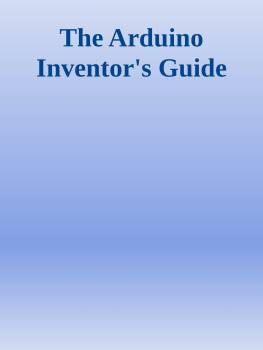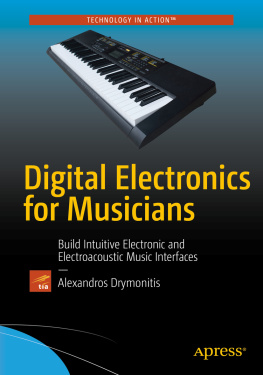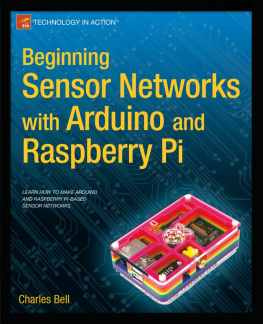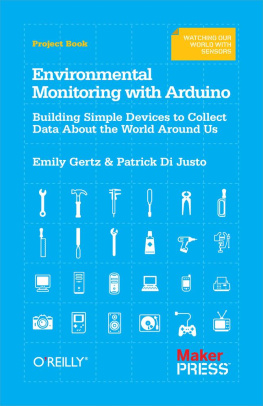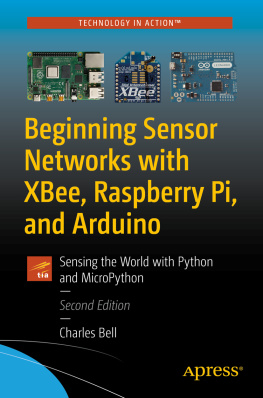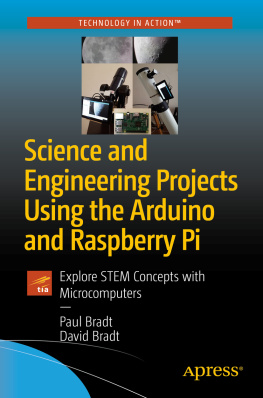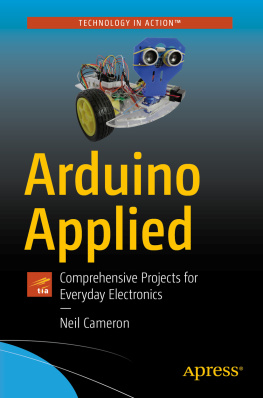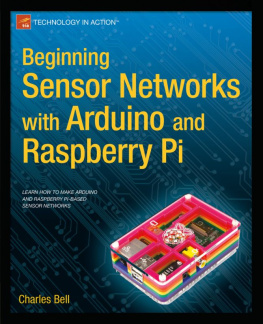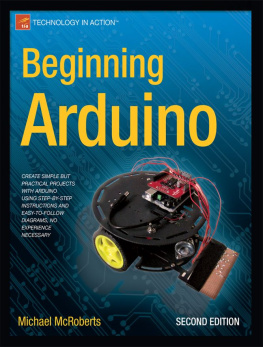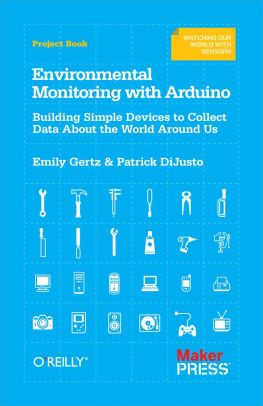Richard J. Smythe
Wainfleet, ON, Canada
ISBN 978-1-4842-6777-6 e-ISBN 978-1-4842-6778-3
https://doi.org/10.1007/978-1-4842-6778-3
Richard J. Smythe 2021
This work is subject to copyright. All rights are solely and exclusively licensed by the Publisher, whether the whole or part of the material is concerned, specifically the rights of translation, reprinting, reuse of illustrations, recitation, broadcasting, reproduction on microfilms or in any other physical way, and transmission or information storage and retrieval, electronic adaptation, computer software, or by similar or dissimilar methodology now known or hereafter developed.
The use of general descriptive names, registered names, trademarks, service marks, etc. in this publication does not imply, even in the absence of a specific statement, that such names are exempt from the relevant protective laws and regulations and therefore free for general use.
The publisher, the authors and the editors are safe to assume that the advice and information in this book are believed to be true and accurate at the date of publication. Neither the publisher nor the authors or the editors give a warranty, expressed or implied, with respect to the material contained herein or for any errors or omissions that may have been made. The publisher remains neutral with regard to jurisdictional claims in published maps and institutional affiliations.
This Apress imprint is published by the registered company APress Media, LLC part of Springer Nature.
The registered company address is: 1 New York Plaza, New York, NY 10004, U.S.A.
The Authors Preface to Arduino in Science
Arduino in Science is written to provide an introduction to the basic techniques that can be used by individuals to engage in experimental science. It is hoped that the manuscript can assist students and those new to or with limited backgrounds in electro-mechanical techniques or the physical sciences, to devise and conduct the experiments they need to further their research or education. It is also hoped that the manuscript will be useful where there are limited financial resources available for the development of experimental designs and experimental or educational programs.
Migrating or foraging animals and insects use daylight, near- infrared light, polarized light, celestial indicators, chemical traces in water, the Earths magnetic field, and other aids to navigate over the Earths surface in search of food or to return home to their breeding grounds. Astronomy, biology, chemistry, geology/geography, mathematics, physics, and other subjects through to zoology are human concepts and classifications entirely unknown to the travelers of the animal world. There are parallels between the animal kingdoms usage of multiple scientific phenomena of which they have no knowledge and current scientific investigations. A significant amount of new scientific knowledge is being revealed by investigators educated in one classifiable discipline using the unfamiliar experimental techniques from another. Although written by an analytical chemist, this manuscript is a compilation of introductory basic techniques applicable to any scientific discipline that requires the experimental measurements of basic physio-chemical parameters.
The author is an experimental analytical chemist who has worked with vacuum tubes, transistors, integrated circuits, main frame, mini-computers, microcomputers, and microcontrollers, while computing technology transitioned from BASIC, Fortran, and variations of C to iterations of the open source systems such as Python, Processing (the basis of the Arduino microcontroller integrated development environment (IDE) language), and Linux operating systems used in the Raspberry Pi. New and revised versions of languages, IDEs, and operating systems are available free of charge from the Internet and are constantly in a state of flux.
This work could be considered as being virtually obsolete as it is being written, but as with the science and technology that it describes, it is a starting point in an ever-changing subject. For the researcher and practicing scientist, the fundamentals of science are relatively constant and reasonably well understood, so a great deal of caution must be used when deciding that a concept or technique is obsolete. The SCADA concept and its development significantly predate the PC. Some of the transistor and CMOS ICs and the 7400 series of integrated circuitry that are in heavy use today date from the 1970s. Many chemical analysis and physical measurement techniques, taught and in use today, date virtually from the Middle Ages.
SCADA is the acronym for supervisory control and data acquisition. SCADA software allows a computer to supervise an electro-mechanical process and do so by acquiring data from sensors that are monitoring the process being controlled. Many of the measurement techniques to be discussed can be considered as single element components that are now part of the developing technology being called the Internet of things (IOT) with the Node-RED connectivity open source software.
HMI is the acronym for human-machine interface. The HMI can be an electronic device or construct that provides an interface between a computer, an experimental setup, and a human operator. (A graphical user interface, GUI, may serve as an HMI.)
USB is the acronym for Universal Serial Bus that is, in reality, a written standard of specifications to which electro-mechanical hardware systems are expected to conform. The USB is a subsystem that lets a personal computer communicate with devices that are plugged into the Universal Serial Bus.
When a personal computer runs supervisory control and data acquisition software with a human-machine interface connected via the Universal Serial Bus system, then investigative science experiments or other processes, experimental apparatus, or equipment setups, either in the field miles away or on the bench next to the computer/workstation or laptop, can be monitored and controlled in real time.
Laptops, stand-alone desktops, and cabled or wireless networked workstations together with Internet connections now allow unprecedented flexibility in laboratory or in-field monitoring of investigative science experiments.
The options available to the experimentalist for implementing SCADA systems can essentially be divided into three categories based upon the amount of development work required to achieve a fully functional system.
Complete, finished, working software systems that are able to measure and control virtually any electro-optical-mechanical system are available from manufacturers such as National Instruments and Foxboro. Commercially available fully functional, basic, software-only systems can be expected to cost in the range of several thousands of dollars.
The author chose to develop this manuscript on three much-lower-cost options for SCADA implementation in experimental setups.
A moderate-cost implementation strategy, involving the following list of resources, has been used to develop the exercises in this manuscript. These resources should also be adequate for further experimental development of new applications:



